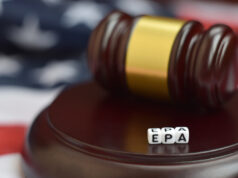Effluent guidelines are critical regulatory standards developed by the EPA to manage the discharge of pollutants from various industrial operations into receiving waters. These guidelines play a pivotal role in maintaining water quality and protecting environmental and public health.
What Are Effluent Guidelines?
Effluent guidelines, also known as effluent limitation guidelines, are EPA-developed standards that regulate wastewater discharges from industrial sources to surface waters and publicly owned treatment works (POTWs). These standards aim to minimize the release of harmful pollutants using specific treatment and control technologies.
Purpose and Development of Effluent Guidelines
The primary goal of EPA effluent guidelines is to reduce the discharge of regulated pollutants to protect water quality and public health. Unlike risk or impact studies, these guidelines are technology-based, relying on the effectiveness of treatment technologies. The EPA assesses industry practices, pollutant characteristics, and treatment technologies to develop economically feasible standards for pollutant reduction.
Types of Regulated Pollutants
Effluent guidelines categorize pollutants into three types:
- Conventional Pollutants: Includes substances like oil and grease.
- Toxic Pollutants: Includes priority pollutants such as phthalates.
- Non-Conventional Pollutants: Includes substances like per- and polyfluorinated substances (PFAS).
Control Technologies
Six control technologies underpin the EPA effluent guidelines:
- Best Available Technology (BAT)
- Best Practicable Control Technology (BPT)
- Best Conventional Pollutant Control Technology (BCT)
- New Source Performance Standards (NSPS)
- Pretreatment Standards for Existing Sources (PSES)
- Pretreatment Standards for New Sources (PSNS)
These technologies ensure that both direct and indirect dischargers effectively manage and reduce pollutant levels.
Implementation and Compliance
Effluent guidelines are enforced through the National Pollutant Discharge Elimination System (NPDES) for direct discharges and the pretreatment program for indirect discharges to POTWs. Compliance is monitored using databases like the Discharge Monitoring Report (DMR) Pollutant Loading Tool and the Integrated Compliance Information System (ICIS)-NPDES. These tools provide detailed tracking of discharge amounts, permit violations, and enforcement actions.
Continuous Improvement
The EPA regularly updates effluent guidelines to address emerging challenges. The latest Effluent Guidelines Program Plan 15, published in January 2023, focuses on reducing PFAS in wastewater discharges, reflecting the EPA’s commitment to evolving environmental standards.
What Water Treatment Pros Need to Know
- Understand the Categories and Technologies: Familiarize yourself with the types of pollutants and the applicable control technologies to ensure compliance and optimal treatment processes.
- Monitor Compliance: Utilize EPA tools and databases to track and maintain compliance with effluent guidelines.
- Stay Informed: Keep up-to-date with the latest EPA updates and guidelines to address new challenges in wastewater treatment.
By adhering to these guidelines and leveraging advanced treatment technologies, water treatment professionals can significantly contribute to protecting water quality and public health.
SOURCE: EPA, Wastewater Digest





